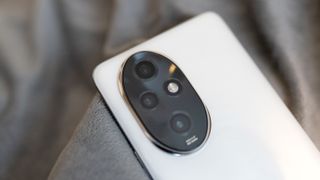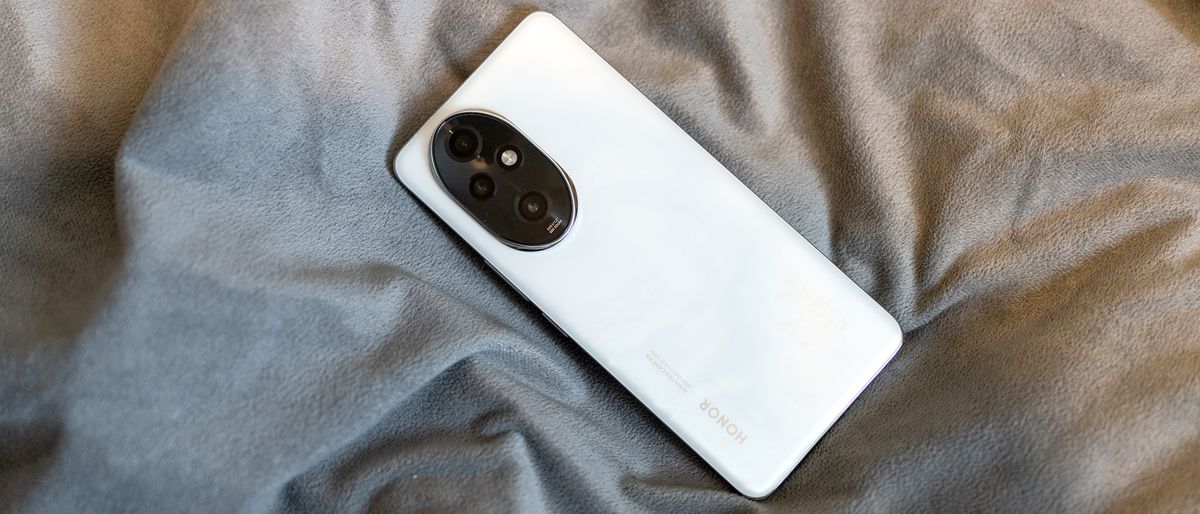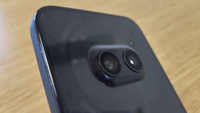Honor keeps on pumping out the hits. From the Magic V2 foldable to its flagship phones, the Huawei offshoot regularly produces handsets that trouble the market leaders. And the same is true of its new 200 series, at the top of which sits the Honor 200 Pro. It’s a photographer’s phone, with enough processing power and a nice enough screen to keep just about everyone happy. Where corners have been cut, such as with the ultrawide camera, it’s perhaps understandable as a way to bring the price down. The 200 Pro isn’t priced like a flagship, but its performance comes in at a similar level to the Samsung Galaxy S22 Ultra or even its S23 Ultra successor, which are still phones to be reckoned with in 2024.
Design and build
Chipset: Qualcomm Snapdragon 8s Gen 3
RAM: 12GB
Storage: 512GB
Screen: 6.8in OLED, 1224 x 2700, 120Hz, HDR
OS: MagicOS 8.0 (Android 14)
Rear camera: 50MP (f/1.9) main, 12MP (f/2.2) ultra-wide, 50MP (f/2.4) telephoto
Front camera: 50MP
Connectivity: Wi-Fi 6, Bluetooth 5.3, NFC, USB 2.0 Type-C
Dimensions: 163.3 x 75.2 x 8.2mm
Weight: 199g
Our review 200 Pro model comes with a white, marble-effect back (pink, cyan and black are also available, only a yellow away from a full CMYK set) from which the ellipsoidal camera cluster stands tall with a silver surround. There’s a silver edge around the rim of the phone, and the front is of course black when the screen is off. It’s a handsome-looking phone from the back, though the white marble and silver do give it the slight air of being part of a bathroom fitting from a hotel, but the back is extremely smooth and will need to be covered in a case if you want to get a grip on it.
The volume rocker, lock button, USB-C port, SIM tray and speakers are all in their expected positions, and there’s no headphone port. The phone comes with an IP65 ingress protection rating, and there’s a screen protector already in place, which on our model had just started to bubble up at the bottom of the screen, which is tempered glass rather than any flavour of Gorilla Glass. The screen itself is an OLED, and is as vibrant as you’d expect, with a 120Hz max refresh rate to keep things smooth, along with plenty of eye-care features.

Otherwise the phone seems to be made to Honor’s usual high standards. There’s a fingerprint reader buried under the screen, and face unlock that’s fast and accurate, and the battery is non-removable. You do get awfully good battery life though, with 100W fast charging, 66W wireless charging (and 5W of reverse) giving it easy all-day battery life from the 5,200mAh pack, edging into two-day territory if you use it sparingly and switch it off at night. A 100W charger is offered as a pack-in with the phone, but our review model didn’t come with one, instead bundling a USB-A to C cable.
Features and performance
The chipset in the Honor 200 Pro is the Qualcomm Snapdragon 8s Gen 3. That ‘s’ is important, as it’s not the same as the Snapdragon 8 Gen 3 that’s in the likes of the Samsung Galaxy S24 Ultra. It’s a cheaper model that retains some premium features, such as having eight CPU cores and loads of RAM, but has a slightly slower ‘prime’ core and a different mix of performance and efficiency cores. It has support for slower RAM, a cut-down GPU, and uses the same 5G modem as the older Snapdragon 8 Gen 2 chip rather than the upgraded one in the full Gen 3. Support for 8K video is also dropped, though 4K HDR at 60fps remains.
In general use, the phone absolutely flies. There’s no lag when you start up from cold, the period of time when you wait for the phone to get its brain in order after the first unlock is reduced to almost nothing, and it flips between apps quickly when you’ve got a few open. The Geekbench scores are noticeably down compared to top-end models such as the Samsung Galaxy S24 Ultra, but you’re paying a lot less for the phone too. CPU scores are at around two-thirds of 2024 flagship levels, but the GPU result is cut in half, and the AI Tensorflow Lite performance is lower than the big Samsung’s too, exactly as expected.
Geekbench 6
CPU: 1762 (single), 4497 (multi)
GPU: 8780
Tensorflow Lite: 883 (CPU),
PCMark
Work: 16059
Battery: 13h 42m

The big news here is in the camera. It’s a three-lens cluster with an LED flash, but comes with a mode we’ve never seen on a phone before: Aperture. This differs slightly from portrait mode, as it locks you into one of the longer focal length options and disables pinch-zooming. Despite being an f/1.9 lens, the Aperture mode allows you to adjust all the way to f1.2 for a smooth background blur, suggesting there’s some sort of algorithmic/AI processing going on. The main sensor is reasonably large for a phone camera, at 1/1.3″, but you’re still not going to get these kinds of bokeh effects naturally, even if the camera app recommends you keep your subject within two metres of the phone to allow physics to give it a hand. Interestingly, the EXIF data of the image files reflects the aperture value you set.
The ‘normal’ portrait mode has also had a facelift, with three Studio Harcourt modes – Vibrant, Colour and Classic (which means black and white) – that can be applied live to your image, but only using the rear camera. Selfies don’t get the same kind of love, though there is a front-mounted depth sensor alongside the camera to give computational effects more of a chance.
Image quality is broadly high, though the 12MP ultrawide camera (which also handles close-up focusing) suffers compared to the 50MP main and tele sensors, and doesn’t get image stabilisation either. The 12.6MP files produced by the pixel-packed sensors are sharp and full of detail, with bright colours and a good range of available aspect ratios, including a 21:9 4K video mode.

Price
Priced at £699 at the time of writing, the 200 Pro isn’t priced as a ‘pro’ or ‘ultra’ model, but sits in with the top of the mid-range handsets. It’s more expensive than a Google Pixel 8 or Nothing Phone 2, the same as a basic iPhone 15 and cheaper than the Samsung Galaxy S24. For the money, it’s a pretty good phone, and it feels high-end. The cameras are the main reason you’ll want to get the Honor 200 Pro, especially if you like to use a phone’s portrait modes, though it will work well as an all-rounder and a gaming phone too.

Who is it for?
Top-mid-range phones like this are perfect for anyone who wants to sample a bit of the good stuff that flagship users are getting, but without the enormous bill. They also allow you to change your phone more often, as you’re not left feeling that you should get the most use possible from your £1,200 investment. It’s also aimed at phone photographers and filmmakers, with its interesting portrait modes, computational filters, and choice of aspect ratios and framerates. It doesn’t support 8K, but who’s shooting that high a resolution on their phones anyway?
Buy it i:
- You take a lot of photos with your phone
- You want a vibrant screen for streaming
- You want excellent performance without the flagship price
Don’t buy it if:
- You won’t be happy with anything but a flagship
Also consider
Another Honor phone with an excellent camera, but a bit more expensive.
A much cheaper way to get 50MP main and ultrawide cameras
You know you want it. Give in to the urge.



